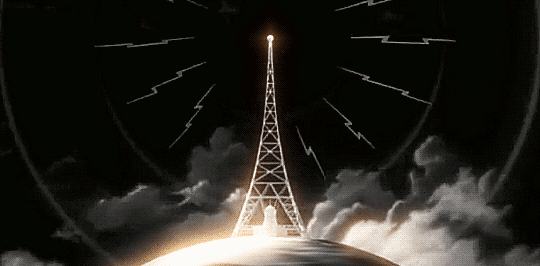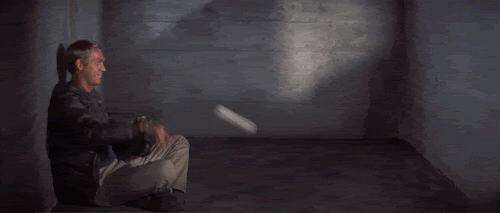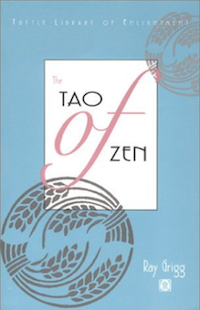Kevin Kelly and Jerry Kaplan discuss an AI future at the 2016 Machine Learning and Market for Intelligence Conference.
RKO Pictures

Wikipedia: “RKO has long been celebrated for its series of musicals starring Fred Astaire and Ginger Rogers in the mid-to-late 1930s. Actors Katharine Hepburn and, later, Robert Mitchum had their first major successes at the studio. Cary Grant was a mainstay for years. The work of producer Val Lewton’s low-budget horror unit and RKO’s many ventures into the field now known as film noir have been acclaimed, largely after the fact, by film critics and historians. The studio produced two of the most famous films in motion picture history: King Kong and Citizen Kane. RKO Pictures is also a member of Motion Picture Association of America.”
This image brings back lots of great memories from my childhood.
Sound City Studios
Wikipedia: “Sound City Studios was located in the San Fernando Valley, amidst rows of dilapidated warehouses. The little-known recording studio housed a unique analog Neve recording console and had a reputation for recording drums. Artists such as Nirvana, Kyuss, Red Hot Chili Peppers, Fleetwood Mac, Neil Young, Rick Springfield, Tom Petty, Rage Against The Machine, and Slipknot recorded groundbreaking music at the studio. The film tells the story of the studio from its early days in 1969 until its closing in 2011.”
Twenty Feet from Stardom
Watched this a year or two back but if I mentioned it here I can find no reference. Wonderful documentary about backup singers.
Flow: The Psychology of Optimal Experience
Wikipedia : “In his seminal work, Flow: The Psychology of Optimal Experience, Csíkszentmihályi outlines his theory that people are happiest when they are in a state of flow—a state of concentration or complete absorption with the activity at hand and the situation. It is a state in which people are so involved in an activity that nothing else seems to matter. The idea of flow is identical to the feeling of being in the zone or in the groove. The flow state is an optimal state of intrinsic motivation, where the person is fully immersed in what he is doing. This is a feeling everyone has at times, characterized by a feeling of great absorption, engagement, fulfillment, and skill—and during which temporal concerns (time, food, ego-self, etc.) are typically ignored.”
: “In his seminal work, Flow: The Psychology of Optimal Experience, Csíkszentmihályi outlines his theory that people are happiest when they are in a state of flow—a state of concentration or complete absorption with the activity at hand and the situation. It is a state in which people are so involved in an activity that nothing else seems to matter. The idea of flow is identical to the feeling of being in the zone or in the groove. The flow state is an optimal state of intrinsic motivation, where the person is fully immersed in what he is doing. This is a feeling everyone has at times, characterized by a feeling of great absorption, engagement, fulfillment, and skill—and during which temporal concerns (time, food, ego-self, etc.) are typically ignored.”
My buddy Henry has been praising this book for years and I finally got around to reading it.
Swinging On A Star (Director’s Cut)
I took another stab at this tune because I noticed I was paying more attention to the video than just playing the song. And seeing me mauling the uke really doesn’t add much. So I just recorded the audio and dropped in a few goofy stills.
Another moment of Zen

IBM’s intranet radio station
IBM Radio is a live-streamed intranet community station cofounded by Azis and a few other company designers in Austin. Over the last year, the station has blossomed, and now anyone else in the company can either listen in or record their own show. Those who take part consider it a community hub for the company, and IBMers around the world tune in every day. […] Today, IBM offices throughout the globe have radio “studios,” although Austin is its headquarters. The station heads have a conference room there that’s been soundproofed and filled with recording equipment.
Employees from around the world contribute their own shows that include call-ins about career advice, a show that features weekly guests who talk about what’s going on at the company, and even shows where upper-level executives just tell interesting stories. The station tracks unique listeners—the number of individuals listening in—and found that it reaches between 5,000 and 6,000 people daily.
Fast Company
The Tao of Zen: Emptying
 In The Tao of Zen, author Ray Grigg devotes 170 pages to tracing the historical roots of Buddhism, Taoism and Zen. I find it tough sledding every time. The rest of the book explores the philosophical similarities between Taosim and Zen. Chapters on: Wordlessness, Selflessness, Softness, Oneness, Emptiness, Nothingness, Balance, Paradox, Non-doing, Spontaneity, Ordinariness, Playfulness, Suchness.
In The Tao of Zen, author Ray Grigg devotes 170 pages to tracing the historical roots of Buddhism, Taoism and Zen. I find it tough sledding every time. The rest of the book explores the philosophical similarities between Taosim and Zen. Chapters on: Wordlessness, Selflessness, Softness, Oneness, Emptiness, Nothingness, Balance, Paradox, Non-doing, Spontaneity, Ordinariness, Playfulness, Suchness.
After three readings, my copy of this book has so many underlines, margin notes and highlighter, it’s getting hard to read. Here are few ideas from the final chapter:
In Taoism and Zen, suchness is accommodated by emptying. This is the process of clearing away the attitudes, the judgements, the roles, and all the conditioned patterns of thinking and feeling that shape ordinary experience. This means no questions, no answers, no explanations, no justifications, no rationalizations, no utilitarianism. It also means no moralizing, no personifying, no empathizing.
“Our existence is nothing but a succession of moments perceived through the senses.” — Jean Jacques Rousseau
(In Taoism and Zen) self is a soft and flexible persona worn for the practical purpose of identification. This was Alan Watts’ point when he said that he was not really Alan Watts, he was only called Alan Watts.
“I don’t have faith. I have experience.” — Joseph Campbell
The Way of Taoism and Zen comes of itself. “It” happens when “It” is ready.
Patterns in the chaos

“Clouds appear and disappear in disordered order. There is structure in the tumult, patterns in the chaos. Such a principle is the underlying character of Taoism and Zen.” — The Tao of Zen by Ray Grigg
